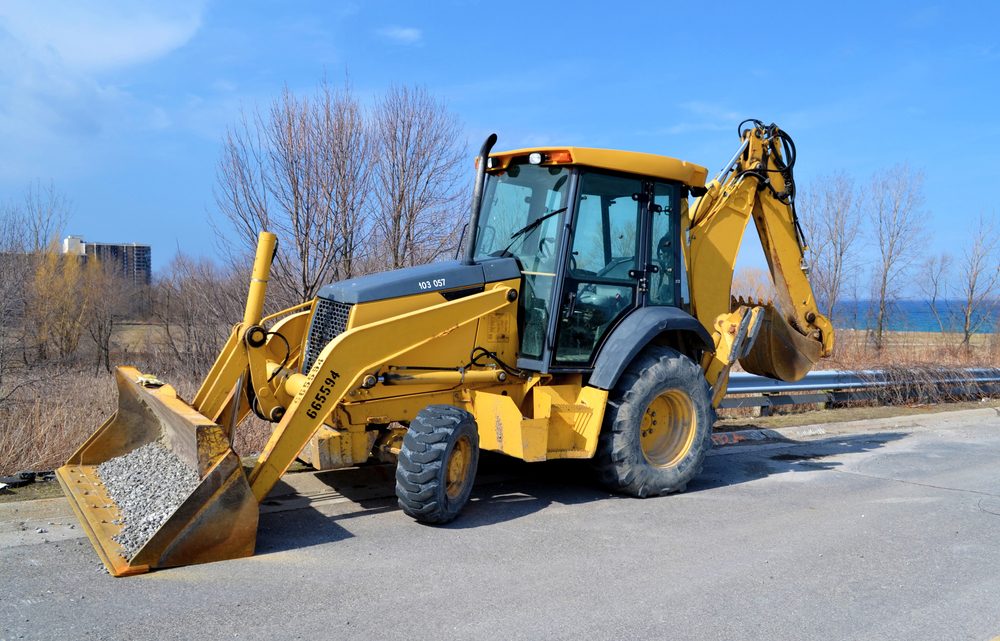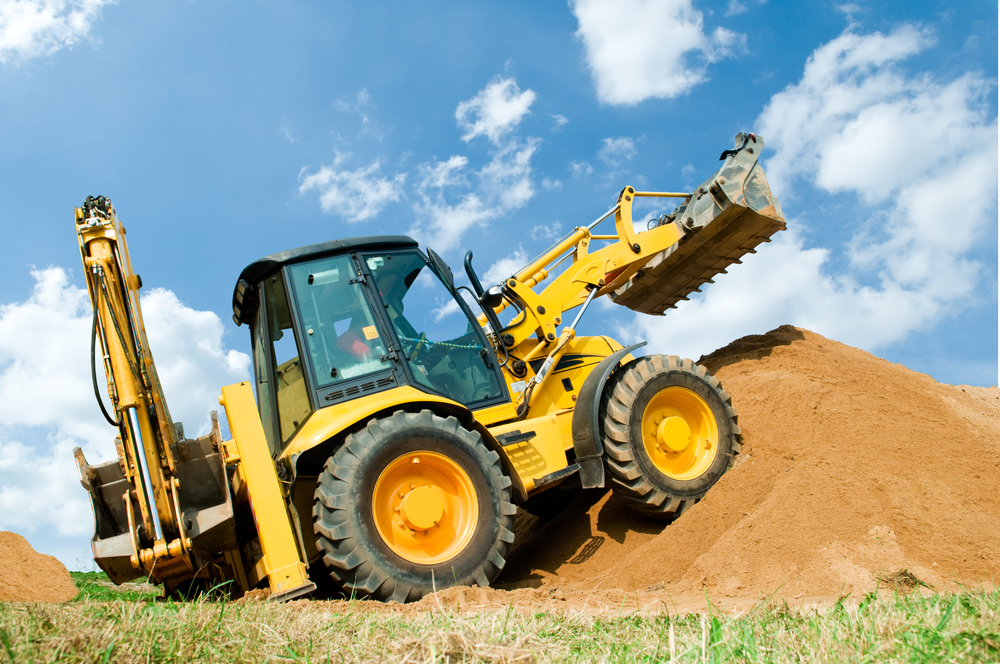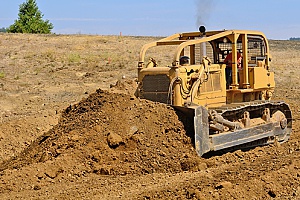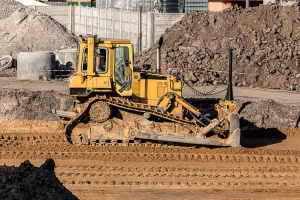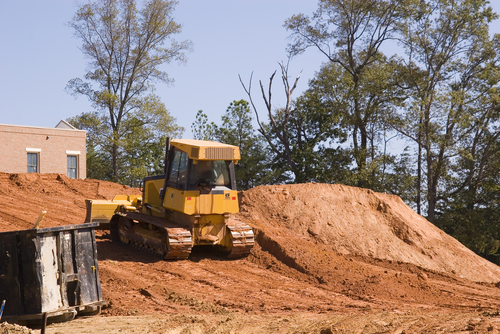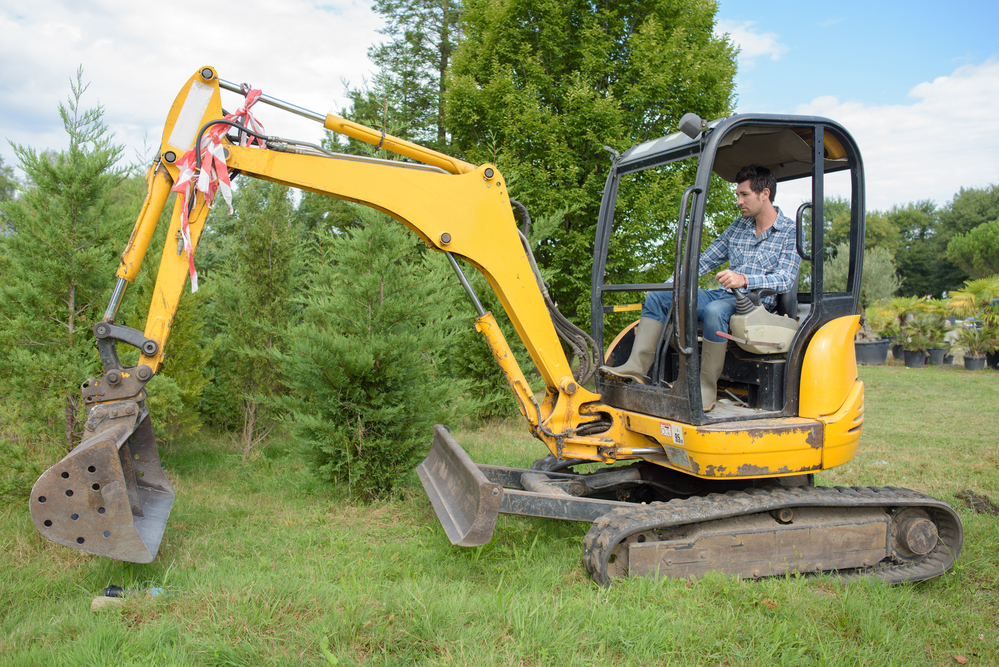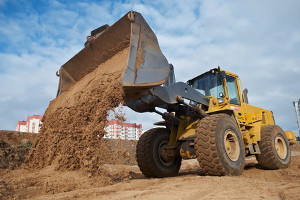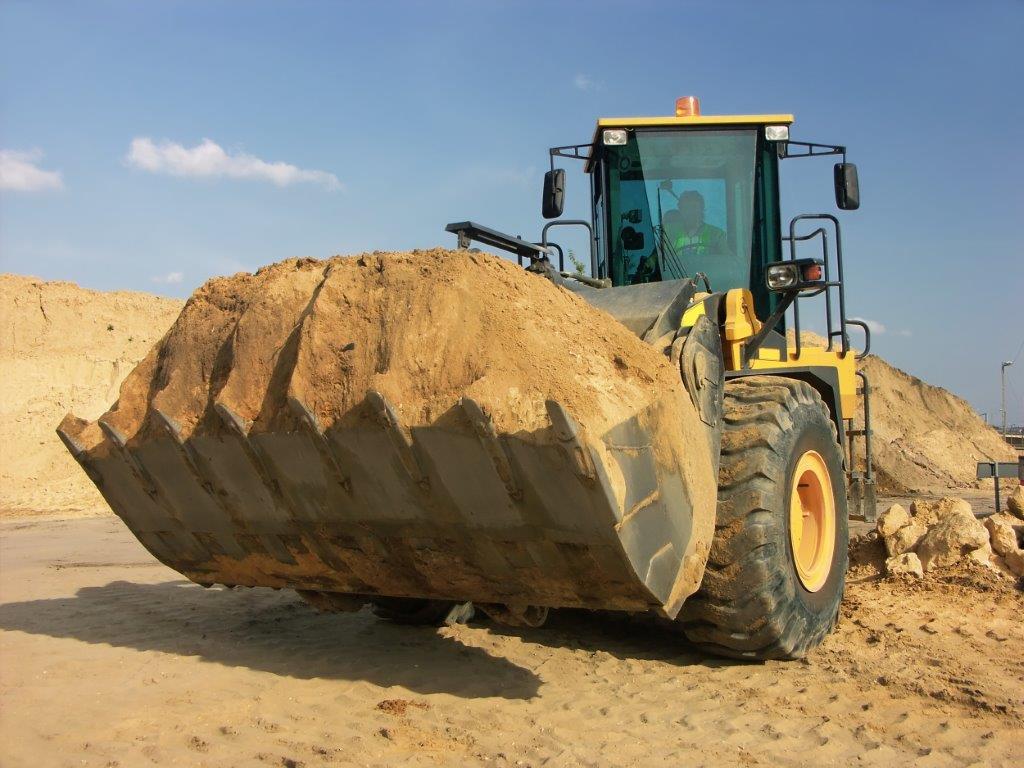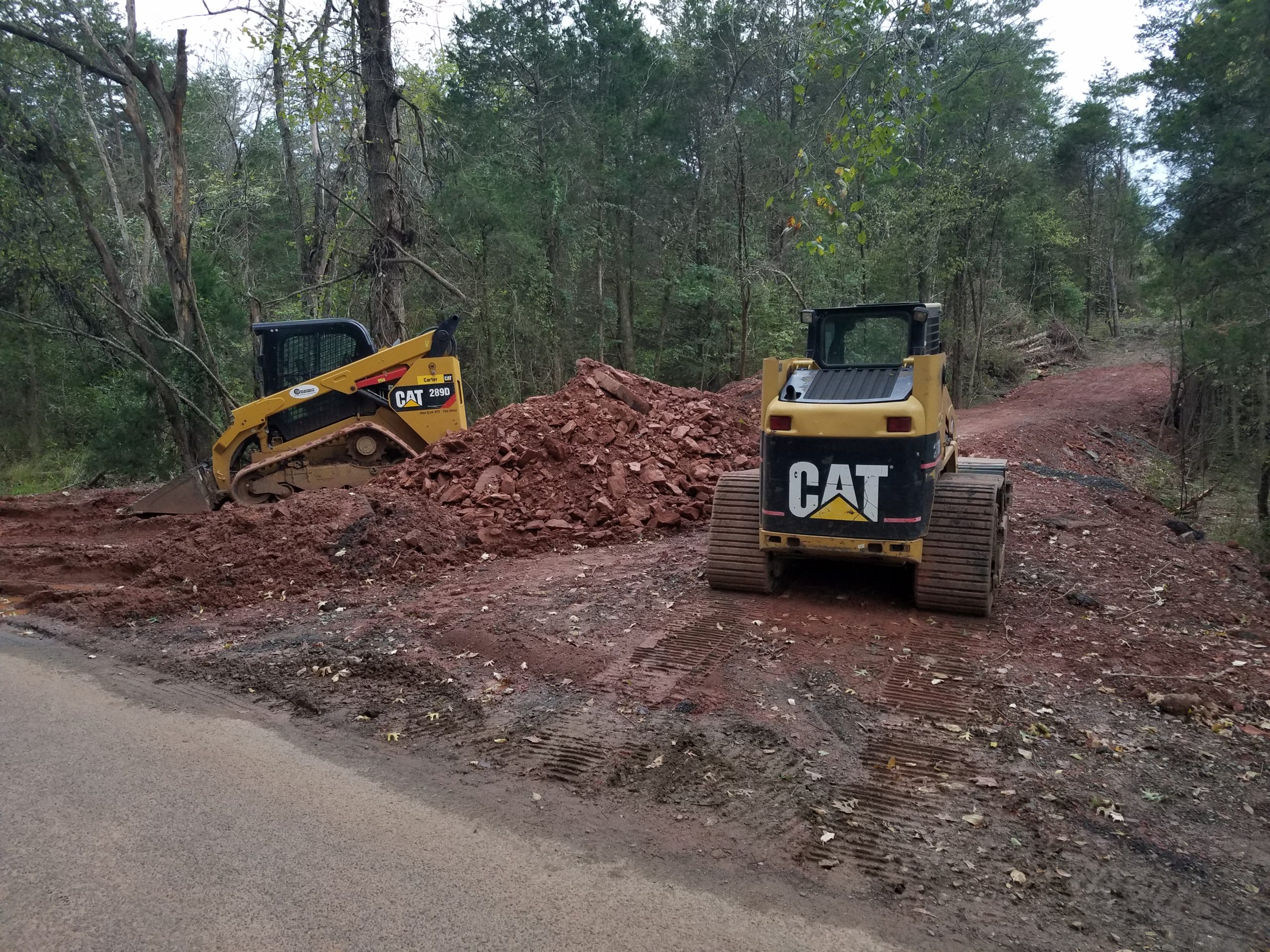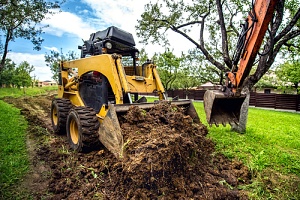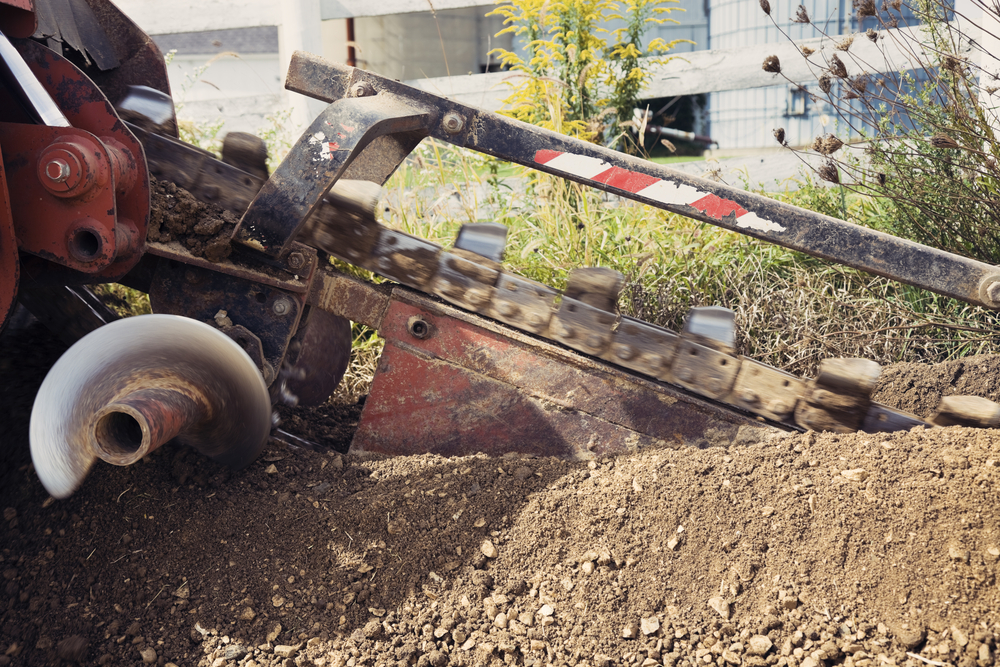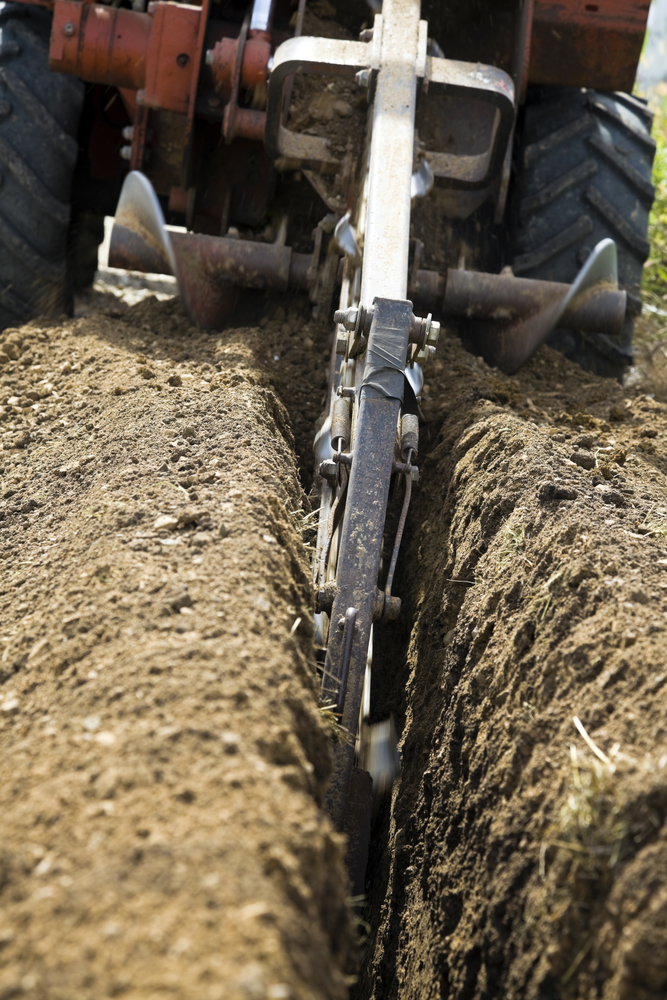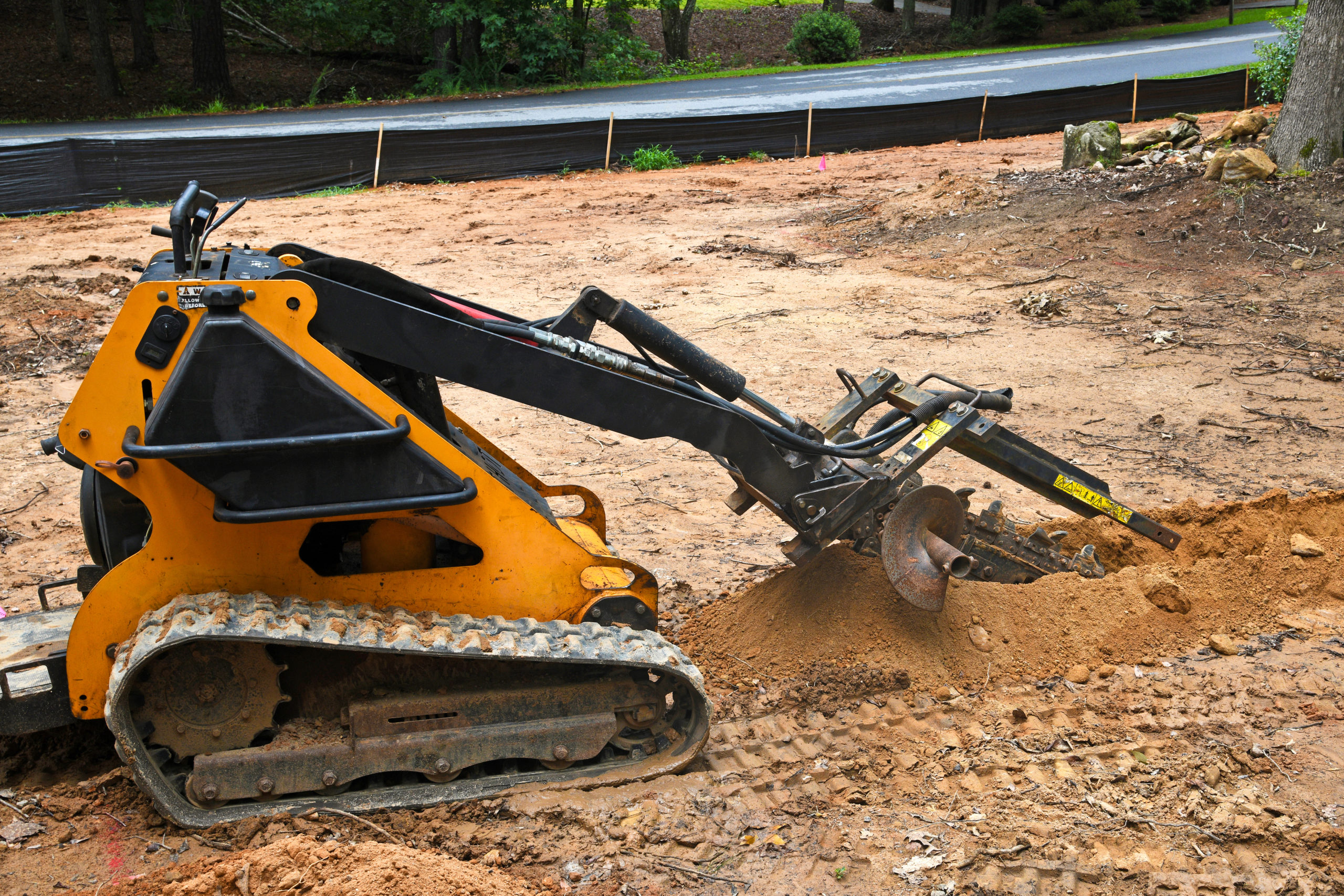If you have ever thought about landscaping your property, you will be pleasantly surprised with the amount of equipment and attachments available. When you pair vision with the right equipment and attachments, you can achieve great landscaping results. Let’s see what landscape equipment is available for your project.
Backhoe Loader
This type of landscape equipment, also referred to as a loader backhoe, the backhoe loader is an engineering and excavation vehicle that consists of a tractor, front shovel and bucket and a small backhoe in the rear end. Due to the small size and versatility, backhoe loaders are common with small construction projects and excavation type work.
Iowa
Originally invented in Burlington Iowa back in 1857, the backhoe loader is the most common variation of the classic farm tractor. As the name implies, it has a loader assembly on the front and a backhoe attachment on the back.
Definition
Anytime the loader and backhoe are attached it is never referred to as a tractor, as it is not normally used for towing and doesn’t normally have a PTO. When the backhoe is permanently attached, the machine will normally have a seat that can swivel to the rear to face the backhoe controls. Any type of removable backhoe attachments will normally have a seperate seat on the attachment itself.
Uses
Backhoe loaders are common landscape equipment and can be used for many tasks, which include construction, light transportation of materials, powering building equipment, digging holes and excavating, breaking asphalt, and even paving roads.
Attachments
You can often replace the backhoe bucket with other tools such as a breaker for breaking and smashing concrete and rock. There are some loader buckets that offer a retractable bottom, which
enable it to empty the load more quickly and efficiently.
Some Attachments
- 3 Point Hitch
- Earth Auger
- Brush Chipper
- Bale Spear
- 6 Way Dozer Blade
- Bale Grabber
- Backhoe
- Concrete Bucket
- Concrete Mixer
- 4 in 1 Combination Bucket
- Cold Planer
- Digging Backhoe
- Dual Rotary Brush Mower
Retractable Booms
The retractable bottom loader buckets are often times used for grading and scratching off sand. The front assembly on a backhoe may be either removable or permanently attached. Often times,
the bucket can be replaced with other tools or devices. In order to mount different attachments to the loader, it must be equipped with a tool coupler. The coupler consists of two hydraulic
cylinders on the end of the arm assembly, which can expand and retract to allow different tools to be attached to the unit.
Manufacturers
There are several types of backhoe loader brands, including New Holland, John Deere, and Case. Some will offer you cabs, while others won’t. The newer types of landscape equipment (backhoe loaders) even offer you air conditioning, radios, and other accessories that make you feel like you are working with luxury.
Common Uses
Common with excavating jobs, the backhoe can serve many purposes. It can haul equipment and supplies in the loader bucket. Another great use is to cover up dirt when filling in trench lines or covering up pipe that was just put in the ground. The backhoe attachment at the rear is ideal for digging water pipes and sewer pipes.
The best thing about the backhoe loader is the fact that they are easy to operate. You don’t need to be a rocket scientist to fully operate this nifty piece of equipment.
Landscape Equipment Rental
Bulldozer
The bulldozer is a very powerful crawler that is equipped with a blade. The term bulldozer is often used to mean any type of heavy machinery, although the term actually refers to a tractor that is fitted with a dozer blade.
Mobility
Often times, bulldozers are large and extremely powerful tracked vehicles. The tracks give them amazing ground mobility and hold through very rough terrain. Wide tracks on the other hand, help to distribute the weight of the dozer over large areas, therefore preventing it from sinking into sandy or muddy ground, a real plus in landscape equipment.
Torque & Power
Bulldozers have great ground hold and a torque divider that’s designed to convert the power of the engine into dragging ability, which allows it to use its own weight to push heavy objects and even
remove things from the ground. Take the Caterpillar D9 for example, it can easily tow tanks that weight more than 70 tons. Due to these attributes, bulldozers are used to clear obstacles, shrubbery, and remains of structures and buildings.
The Blade
- The blade on a bulldozer is the heavy piece of metal plate that is installed on the front. The blade pushes things around. Normally, the blade comes in 3 varieties:
- Straight blade that is short and has no lateral curve, no side wings, and can be used only for fine grading.
Universal blade, or U blade, which is tall and very curved, and features large side wings to carry more material around. - Combination blade that is shorter, offers less curvature, and smaller side wings.
Modifications
Over time, bulldozers have been modified to evolve into new machines that are capable of things the original bulldozers weren’t. A good example is that loader tractors were created by removing the blade and substituting a large volume bucket and hydraulic arms which will raise and lower the bucket, therefore making it useful for scooping up the earth and loading it into trucks.
Other modifications to the original bulldozer include making it smaller to where it can operate in small working areas where movement is very limited, such as mining caves and tunnels. Very
small bulldozers are known as calfdozers.
History
Start
The first types of bulldozers were adapted from farm tractors that were used to plough fields. In order to dig canals, raise earth dams, and partake in earthmoving jobs, the tractors were equipped
with a thick metal plate in the front. Later on, this thick metal plate earned the name blade.
Purpose
The blade of the bulldozer peels layers of soil and pushes it forward as the tractor advances. The blade is the heart and soul of the bulldozer, as it was the first accessory to make full use for excavation type jobs.
Development
As the years went by, when engineers needed equipment to complete larger jobs, companies such as CAT, Komatsu, John Deere, Case, and JCB started to manufacture large tracked earthmoving equipment. They were very loud, very large, and very powerful and therefore earned the nickname “bulldozer”.
Improvements
Over the years, the bulldozers got bigger, more powerful, and even more sophisticated. The important improvements include better engines, more reliable drive trains, better tracks, and
even hydraulic arms that will enable more precise manipulation of the blade and automated controls. As an added option, bulldozers can come equipped with a rear ripping claw to break up pavement or loosen rocky soil.
CAT Power
The best known manufacturer of bulldozer is CAT, which has earned a vast reputation for making tough and durable, yet reliable machines. Even though the bulldozer started off a modified farm
tractor, it rapidly became one of the most useful pieces of equipment with excavating and construction.
Compact Excavator
The compact hydraulic excavator can be a tracked or wheeled vehicle with an approximate operating weight of 13,300 pounds. Normally, it includes a standard backfill blade and features an independent boom swing. The compact hydraulic excavator is also known as a mini excavator in the landscape equipment business. This is a real plus in the way of landscape machinery.
A compact hydraulic excavator is different from other types of heavy machinery in the sense that all movement and functions of the machine are accomplished through the transfer of hydraulic fluid. The work group and blade are activated by hydraulic fluid acting upon hydraulic cylinders. The rotation and travel functions are also activated by hydraulic fluid powering hydraulic motors.
Most types of compact hydraulic excavators have three assemblies – house, undercarriage, and the work group.
House
The house structure contains the compartment for the operator, engine compartment, hydraulic pump and also the distribution components. The house structure is attached to the top of the undercarriage via swing bearing. Along with the work group, the house is able to rotate upon the undercarriage without limit due to a hydraulic distribution valve that supplies oil to the undercarriage components.
Undercarriage
The undercarriage of compact excavators consists of rubber or steel tracks, drive sprockets, rollers, idlers, and associated components and structures. The undercarriage is also home to the house
structure and the work group.
Work Group
The work group consists of the boom, dipper or arm, and attachment. It is connected to the front of the house structure via a swinging frame that allows the work group to be hydraulically pivoted
left or right in order to achieve offset digging for trenching parallel with the tracks.
Independent Boom Swing
The purpose of the boom swing is for offset digging around obstacles or along foundations, walls, and forms. Another use is for cycling in areas that are too narrow for cab rotation. Another
major advantage of the compact excavator is the independent boom swing.
Backfill Blade
The backfill blade on compact excavators are used for grading, leveling, backfilling, trenching, and general dozer work. The blade can also be used to increase the dumping height and digging
depth depending on it’s position in relation to the workgroup.
The most common place you’ll find compact excavators is in residential dwellings. When digging phone lines or other things, these pieces of equipment are very common for getting between houses. Due to their small size, they can fit almost anywhere.
Additional Purposes
Over the years, the capabilities for compact excavators have expanded far beyond the tasks of excavation. With hydraulic powered attachments such as breakers, clamps, compactors and augers,
the compact excavator is used with many other applications and serves as an effective attachment tool as well. Serving many purposes, the compact excavator is a great addition to any job that
requires the use of machinery.
Front Loader
This type of landscape equipment, also known as a front end loader, bucket loader, scoop loader, or shovel, the front loader is a type of tractor that is normally wheeled and uses a wide square tilting bucket on the end of movable arms to lift and move material around.
Attachment Options
The loader assembly may be a removable attachment or permanently mounted on the vehicle. Often times, the bucket can be replaced with other devices or tools, such as forks or a hydraulically operated bucket. See additional attachment options below;
- Dumping Box
- Extreme-Duty Hydraulic Snow Blower
- Grapple Bucket
- Skeleton Grapple Rock Bucket
- Grapple Stump Bucket
- Heavy-Duty Power Angle Broom
- Hydraulic Breaker
- High Capacity Grapple Bucket
- Heavy-Duty Forestry Mulcher
- Heavy-Duty Low Profile Bucket
- Heavy Duty Pick-Up Broom
- Hydraulic Pallet Forks
Loader Variants
Larger style front loaders, such as the Caterpillar 950G or the Volvo L120E, normally have only a front bucket and are known as front loaders, where the small front loaders are often times
equipped with a small backhoe as well and called backhoe loaders or loader backhoes.
Loader Use
Loaders are primarily used for loading materials into trucks, laying pipe, clearing rubble, and also digging. Loaders aren’t the most efficient machines for digging, as they can’t dig very deep below the level of their wheels, like the backhoe can.
Machine Classification
The deep bucket on the front loader can normally store around 3 – 6 cubic meters of dirt, as the bucket capacity of the loader is much bigger than the bucket capacity of a backhoe loader. Loaders
aren’t classified as excavating machinery, as their primary purpose is other than moving dirt.
Main Uses
In construction areas, mainly when fixing roads in the middle of the city, front loaders are used to transport building materials such as pipe, bricks, metal bars, and digging tools. Front loaders are also very useful for snow removal as well, as you can use their bucket or as a snow plow. They can clear snow from the streets and highways, even parking lots. They will sometimes load the snow into dump trucks which will then haul it away.
Wheeled Machine
Unlike the bulldozer, most loaders are wheeled and not tracked. The wheels will provide better mobility and speed and won’t damage paved roads near as much as tracks, although this will come
at the cost of reduced traction.
Steering
Unlike backhoes or tractors fitted with a steel bucket, large loaders don’t use automotive steering mechanisms, as they instead steer by a hydraulically actuated pivot point set exactly between the front and rear axles. This is known as articulated steering and will allow the front axle to be solid, therefore allowing it to carry a heavier weight.
Improved Turning
Articulated steering will also give a reduced turn in radius for a given wheelbase. With the front wheels and attachment rotating on the same axis, the operator is able to steer his load in an arc after positioning the machine, which can come in quite handy. The problem is that when the machine is twisted to one side and a heavy load is lifted high in the air, it has a bigger risk of turning over.
Skid Loader
The skid loader is a rigid frame, engine powered machine with lift arms that are used to attach a wide variety of labor saving tools or attachments. Skid loaders are normally four wheel drive with
left side drive wheels that are independent of right side drive wheels. With each side being independent to the other, the wheel speed and direction of rotation of the wheels will determine which direction the loader turns. This type of landscape equipment is very popular with residential landscaping projects.
Agile Loader
Skid loaders are capable of turning in their own tracks, which makes them very maneuverable and valuable for jobs that require the use of compact, agile loader. Unlike conventional front loaders, the lift arms lay beside the driver with the major pivot points located behind the shoulders of the operator. Due to the operator being in close proximity to moving booms and buckets, earlier models of skid loaders weren’t as safe as conventional front loaders, particularly during entering and exiting. Skid loaders today have fully enclosed cabs and other safety features that will protect the operator from injury. Just like other front loaders, the skid steer can scrape material from one location to another, carry material in a bucket, or load material on a truck or a trailer.
Operation
A skid loader can sometimes take the place of a large excavator by digging a hole out from the inside. The skid loader will first dig a ramp that leads to the edge of the hole. Then, the loader will use the ramp to carry material out of the hole. The skid loader will then reshape the ramp by making it steeper and longer as the excavation gets deeper. This method is very useful for digging under an overhead structure where the overhead clearance doesn’t allow for the boom of a large excavator, such as those situations where you are digging a basement under a house.
Specialized Attachments
The bucket of most types of skid loaders can be replaced with several specialized buckets or landscape equipment attachments, many of which are powered by the hydraulic system of the loader.
More Attachments
- Heavy-Duty Rock Saw
- Soil Conditioner
- Heavy-Duty Tree Puller
- Heavy-Duty Trencher
- Grapple Bucket
- Grapple Rake
- Inverted Log Splitter
- Log, Brush & Rock Grapple
- Snow/Light Material Blade
- Snow Pusher
- Material Bucket
- Landscape Rake
- Landscape Seeder
- Forestry Mulching Mower
- Pipe Grapple
- Land Planer
- Post Driver
- Pavement Saw
- Rotary Tiller
- Stump Grinder
- Sod Roller
- Salt, Sand & Fertilizer Spreader
- Teleboom
- Tree Puller
- Shears
- Spade
- Brush Mower
- Vibratory Compactor
History
Start
The first 3 wheeled front end loader was invented by two brothers, Cyril and Louis Keller in their machinist shop in Minnesota back in 1957. The Kellers built the loader to help a nearby farmer
clean turkey manure from his two story barn. The light and compact loader, with the rear caster wheel, was able to turn around within the length of itself, while performing the very same tasks as
conventional front end loaders.
New Owners
Down the road, the Melroe manufacturing company in Gwinner ND, purchased the rights to the Keller loader in 1958 and hired the brothers to continue their loader invention. Resulting from the
partnership, the M-200 self propelled loader was introduced at the end of 1958.
Improvements
The loader featured two independent front drive wheels and a rear caster wheel, a 12.9 engine and a 750 lb lift capacity. Two years later, they ended up replacing the caster wheel with a rear
axle and introduced the M-400 loader, which was the first four wheel skid steer loader in the world.
New Name
In 1962, the Bobcat name was added to describe the key features of the machine – touch, agile, and quick. The M-440 was powered by a 15.5 HP engine and offered a 1100 lb rated operating capacity. In the mid 1960s, the skid steer loader progressed with the introduction of the M600 loader.
Changes
Years later, the Bobcat skid steer loader experienced quite a few changes, including the development of a hydrostatic drive system, enforced cab structures, radius and vertical lift arm configurations, deluxe instrumentation, and even heating and air conditioning.
Today
In addition to the rubber tire skid loaders of today, there are now all-wheel steer loaders and even compact track loaders. Compact track loads offer less ground disturbance and feature better traction and control in soft, muddy, wet, and even sandy ground conditions.
Trenching And Plowing Equipment
When trenchers were first introduced to the residential and commercial contractors, they rapidly became the backbone of the crew. The time and labor trenchers saved when they replaced the pick and shovel was simply incredible. With this new landscape equipment, the contractor was able to double the number of jobs his crew could complete in the same amount of time – or less.
Standard Trencher
The standard types of trenchers, whether dedicated units or attachments, they are versatile machines for contractors to have with them on the job. They can be used for many different purposes, from digging valve box holes to trenches for drain pipes. In areas that contain rocky soil, large roots, or other problems where the other machinery can’t access the soil, the trencher will minimize downtime that was once spent digging by hand.
Vibratory Plows
The many types of vibratory plows will offer even more labor saving options. These plows eliminate the hand labor of having to lay the pipe and backfilling on numerous jobs. Even though vibratory plows have taken their market share and are great for pulling pipe, trenchers are still very important for many different types of applications. This landscape equipment development has improved production and results.
Trenching Attachments
The impressive company Bobcat offers three different trenching attachments that are designed for use on the smaller skid steer loaders. The attachment models LT102, LT203, and LT304 all have digging depths from 2 – 4 feet.
Mini Trenchers
The mini trenchers have been re-designed and finely tuned from the same concept that made standard trenchers so popular. As the name suggests, they are lightweight, with the largest models weighing less than 400 pounds. They are also compact, allowing you to put them in the back of an average pickup truck. They will also dig a trench around 4 inches wide, and up to 13 inches deep, neatly laying the soil on side of the trench. Without any trouble at all, you can cover pipe with the backfill, leaving a barely visible seam in the soil. This type of landscape equipment is a real plus for the do it yourselfer and small projects.
Money Savings
With time being money, these types of mini trenchers are the answer when working in tight or small areas, or on jobs that have a lot of trees or shrubbery. Mini trenchers have a turning radius of less than two feet and they will easily fit through most garden gates. Jobs that would normally need a lot of manual labor will now save you a lot of time and man power.
Great Tool
If you do construction or excavation work, even gardening, you’ll find trenching and plowing equipment to be essential to your work. If you’ve never used these types of equipment before, you’ll be amazed at just how much time you can save.
Versatility of Compact Excavators
Compact excavators are a versatile addition to any landscaping project, offering the ability to navigate tight spaces and perform a variety of tasks with precision. From digging trenches and foundations to grading and clearing debris, these machines are essential for efficient and effective landscape work. Their adaptability with different attachments, such as augers and hydraulic breakers, makes compact excavators indispensable for both residential and commercial landscaping needs.
Landscape Essential Hand Tools
Summary

Dirt Connections was started with one goal in mind: providing quality residential and commercial construction services to clients on time and on budget. Reach out for more information on how we can support your next project.
For your convenience our estimates are free and by appointment. Call 703-940-9949 for a free estimate today!

